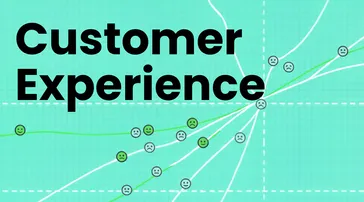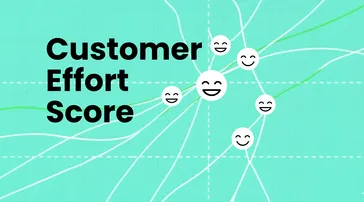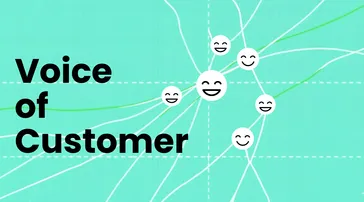5 min read
Listen and understand your customers. Win them at any stage of their journey.
cx Platform
Customer churn rate is the pulse of your business’s health, revealing exactly how many customers are leaving your service over a specific period. For B2B SaaS and subscription-based companies, understanding and reducing this metric is critical for sustainable growth. This guide covers the essential definition of customer churn, provides a step-by-step calculation framework, and outlines actionable strategies to boost retention. By mastering your customer churn rate, you can identify friction points in the customer experience and implement targeted solutions to keep your user base loyal and growing.
What is Customer Churn Rate?
Customer Churn Rate (often called simply “churn”) is a business metric that calculates the percentage of customers who stop doing business with an entity during a given time frame. It is the direct opposite of customer retention.
When a customer “churns,” they cancel their subscription, stop purchasing, or fail to renew a contract. A high churn rate is a red flag indicating potential problems with product satisfaction, customer support, or competitive pricing. Conversely, a low churn rate suggests a healthy product-market fit and strong customer loyalty.
Why is Churn Rate Important?
Monitoring customer churn is not just about tracking losses; it’s about unlocking growth opportunities. Here is why it matters:
- Revenue Protection: Churn directly erodes your Monthly Recurring Revenue (MRR). It is widely accepted that acquiring a new customer can be 5 to 25 times more expensive than retaining an existing one (source: Harvard Business Review).
- Customer Satisfaction Proxy: A rising churn rate often precedes negative reviews and brand reputation damage. It serves as an early warning system for declining customer satisfaction.
- Investor Confidence: For SaaS startups, investors heavily scrutinize churn. High retention proves your business model is sustainable and scalable.
How to Calculate Customer Churn Rate
Calculating your churn rate is straightforward. The standard formula focuses on the number of customers lost relative to the total number of customers at the start of the period.
The Churn Rate Formula
Example Calculation: If you start the month with 500 customers and lose 25 of them by the end of the month:
This means your monthly churn rate is 5%.
Steps to Calculate
- Define the Period: Choose a timeframe (monthly, quarterly, or annually). Monthly is most common for SaaS.
- Determine Starting Count: Count the total active customers on day 1 of the period.
- Count Lost Customers: Tally how many of those specific customers cancelled by the last day of the period. (Do not include new sign-ups in this “lost” count).
- Apply the Formula: Divide lost customers by starting customers and multiply by 100.
Churn Rate vs. Retention Rate
While churn measures who leaves, retention measures who stays. Both are two sides of the same coin, but they serve slightly different strategic purposes.
| Metric | Definition | Calculation | Goal |
|---|---|---|---|
| Customer Churn Rate | Percentage of customers lost. | (Lost / Start) × 100 | Minimize (Keep close to 0%) |
| Customer Retention Rate | Percentage of customers retained. | ((End - New) / Start) × 100 | Maximize (Keep close to 100%) |
| Revenue Churn | Percentage of revenue lost. | (Lost Revenue / Start Revenue) × 100 | Negative Churn (Expansion > Loss) |
Retention Strategies to Reduce Churn
To lower your customer churn rate, you need proactive strategies that address customer needs before they decide to leave.
1. Leverage Customer Feedback and Surveys
You cannot fix what you don’t measure. Use exit surveys to ask departing customers exactly why they are leaving. Was it price? Missing features? Poor support?
- Action: Implement a generic Customer Exit Survey to capture reasons for cancellation.
- Action: Use NPS surveys to gauge loyalty and intervene with detractors before they churn.
2. Optimize Customer Onboarding
Churn often happens early because users don’t understand how to get value from your product. A smooth onboarding process ensures customers reach their “Aha!” moment quickly.
- Tip: Create automated email sequences that guide new users through key features.
3. Deliver Exceptional Customer Service
Poor service is a leading cause of churn. Ensure your support team is responsive and helpful.
- Metric: Measure satisfaction after every ticket using a Customer Service Satisfaction Survey.
4. Continuous Improvement with Data
Don’t guess; look at the data. Analyze your survey results to spot trends. If 80% of churned users complain about a specific bug, prioritize that fix.
How Responsly Helps Reduce Customer Churn
Responsly provides the toolkit you need to listen to your customers and act on their feedback before it’s too late. By integrating customer experience management into your daily operations, you can significantly reduce churn.
- Automated Exit Surveys: Automatically trigger surveys when a user clicks “cancel” to understand their reasons and potentially win them back with a counter-offer.
- NPS & Health Monitoring: regularly send Net Promoter Score (NPS) surveys via email or in-app to track customer sentiment. Identify at-risk customers (Detractors) and proactively reach out to resolve their issues.
- 360-Degree Feedback: Centralize all your feedback—from product satisfaction to support interactions—in one dashboard. This holistic view helps you spot churn signals early.
- Integration: Responsly integrates with your CRM and support tools, ensuring that feedback leads to immediate action by your success team.
Ready to take control of your retention? Start by measuring your customer sentiment today with Responsly’s Survey Maker.
Summary
Reducing customer churn rate is the most effective way to grow your business revenue and profitability. By understanding the formula, monitoring the metric regularly, and implementing robust retention strategies like feedback loops and improved support, you can turn potential losses into loyal advocates. Start calculating your churn today and use the insights to build a better experience for your customers.





